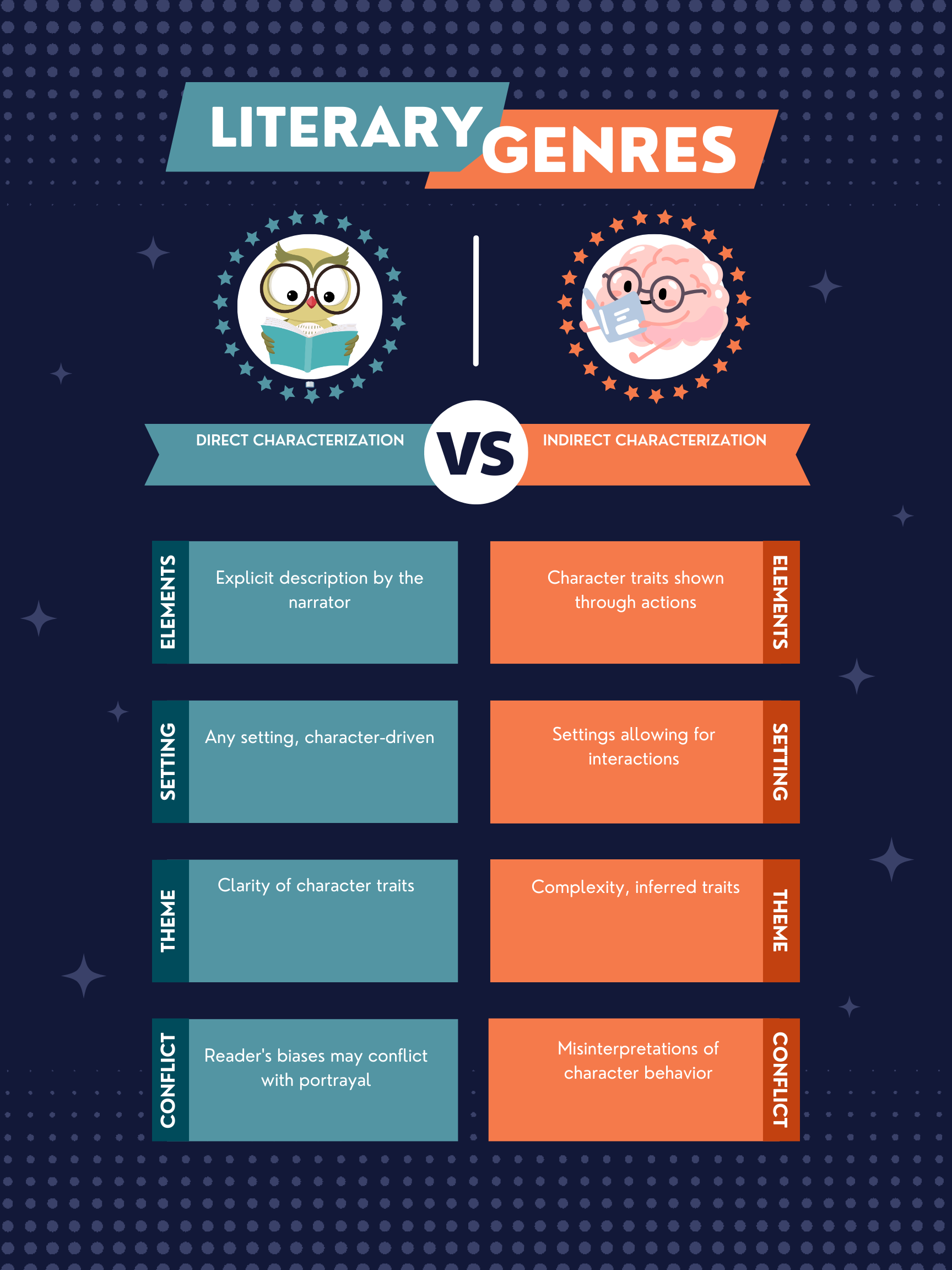Direct characterization tells the audience what a character is like; Indirect characterization shows traits through actions, thoughts, and dialogue.
Direct Characterization 🗣️
Direct characterization is straightforward: the narrator explicitly describes the character’s personality, values, or physical attributes. This approach leaves little to the imagination, providing clear insights into the character. For example, in The Great Gatsby by F. Scott Fitzgerald, Nick Carraway describes Jay Gatsby as “incredibly handsome, enormously wealthy, and mysteriously mysterious,” offering a direct insight into Gatsby’s character.
Indirect Characterization 🕵️
Indirect characterization requires the reader to infer a character’s traits from their actions, words, decisions, and interactions with others. It’s like piecing together a puzzle, where each piece contributes to a fuller understanding of the character. In Harper Lee’s To Kill a Mockingbird, Atticus Finch’s integrity and moral fortitude are shown through his actions, like his defense of Tom Robinson, rather than through direct statements about his character.
Summary
| Literary Device | Definition | Purpose | Usage | Relevant Examples |
|---|---|---|---|---|
| Direct Characterization | Narrator explicitly describes a character | To clearly define a character for the reader | Straightforward narratives, introductions | The Great Gatsby by F. Scott Fitzgerald |
| Indirect Characterization | Traits revealed through actions and dialogue | To allow readers to deduce character traits | Complex narratives, character-driven stories | To Kill a Mockingbird by Harper Lee |
Writing Tips
- For Direct Characterization: Use it sparingly to avoid over-explaining. It’s most effective when introducing characters or highlighting key traits that might not be evident through actions alone.
- For Indirect Characterization: Show, don’t tell. Use your characters’ interactions, choices, and conflicts to reveal who they are. This approach can create more engaging and relatable characters.
FAQs
Q: Can a story use both direct and indirect characterization?
A: Yes, most stories benefit from a mix of both to create a well-rounded narrative.
Q: Is one method better than the other?
A: Neither is inherently better; the choice depends on the story’s needs and the writer’s style.
Q: How can I improve my indirect characterization skills?
A: Practice writing scenes that show your characters’ traits through their decisions, dialogue, and how others react to them.
Exercise:
Read the following excerpt and identify whether it’s an example of direct or indirect characterization:
“John always arrived early at meetings, prepared with a list of ideas and questions. He often stayed late to help colleagues with their projects, even if it meant delaying his own work.”
Answer: Indirect characterization.
Other Device Comparisons You May Find Interesting
- Show vs Tell: Enhancing narrative through demonstration versus exposition.
- Dynamic vs Static Characters: Understanding character development over time.
- Foreshadowing vs Flashback: Techniques for enriching the narrative with past and future elements.
- First-Person vs Third-Person Narration: The impact of narrative perspective on storytelling.
Exploring these literary devices can further enhance your writing and reading experiences, offering new insights into the craft of storytelling.

